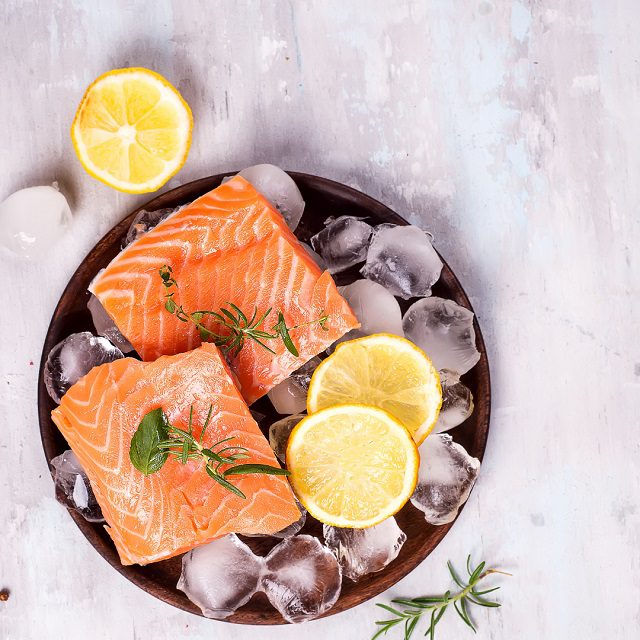```html
Navigating the Meat Aisle: Your Guide on How to Choose Lean Proteins at the Store
Feeling overwhelmed by the protein options at the grocery store? You're not alone! With so many choices, deciphering which are truly "lean" and beneficial for your health can be a challenge. This comprehensive guide will empower you with the knowledge and strategies you need to confidently choose the best lean proteins at the store, every time.
Why Choosing Lean Proteins Matters for Your Health
In today's health-conscious world, prioritizing lean proteins is crucial for maintaining a balanced diet. Lean proteins are essential building blocks for your body, supporting muscle growth and repair, providing sustained energy, and contributing to overall well-being. But why choose lean specifically? The answer lies in minimizing unnecessary saturated fats and cholesterol, which can contribute to heart health issues. Learning how to choose lean proteins at the store is an investment in your long-term health.
Poor dietary choices can lead to a number of health problems. By focusing on lean protein sources, you reduce the risk of elevated cholesterol levels and potential heart problems. You also contribute to better weight management, as lean proteins can help you feel fuller for longer, reducing the urge to snack on less healthy options.
Key Features to Look For When Choosing Lean Proteins
Successfully navigating the protein aisle requires understanding what to look for. Here's a breakdown of key features and considerations:
- Fat Content: The lower the fat content, the leaner the protein source. Pay close attention to saturated fat, aiming for options with minimal amounts.
- Protein-to-Fat Ratio: Evaluate the ratio of protein to fat. A higher protein-to-fat ratio indicates a leaner choice.
- Serving Size: Compare nutritional information based on standardized serving sizes to make accurate comparisons.
- Preparation Methods: Consider how you plan to cook the protein. Grilling, baking, and broiling are generally healthier than frying.
- Source and Quality: Opt for high-quality protein sources from reputable brands. Look for terms like "grass-fed" or "organic" when appropriate, depending on your preferences and budget.
Decoding Protein Labels: A Step-by-Step Guide
Understanding nutrition labels is paramount when figuring out how to choose lean proteins at the store. Here's how to break down the key information:
- Locate the Nutrition Facts Panel: This panel provides detailed information about the product's nutrient content.
- Check the Serving Size: All the information on the label is based on the serving size listed. Make sure the serving size is realistic for your consumption.
- Focus on Total Fat and Saturated Fat: Pay close attention to these numbers. Aim for options with the lowest amounts of saturated fat.
- Look at Protein Content: Ensure the product provides a significant amount of protein per serving.
- Consider Cholesterol and Sodium: While not directly related to leanness, keeping an eye on these values is important for overall health.
Top Lean Protein Choices at the Grocery Store
Here are some excellent lean protein options you can find at your local grocery store:
- Skinless Chicken Breast: A versatile and widely available lean protein source. Remove the skin before cooking to reduce fat content.
- Turkey Breast: Similar to chicken breast, turkey breast is a great low-fat option.
- Fish (Salmon, Tuna, Cod): Fish, especially fatty fish like salmon, are rich in omega-3 fatty acids and protein. Cod and tuna are also lean choices.
- Lean Ground Beef (90% Lean or Higher): Look for ground beef with a high lean-to-fat ratio. Drain off any excess fat after cooking.
- Pork Tenderloin: A surprisingly lean cut of pork that's both flavorful and nutritious.
- Beans and Lentils: Excellent plant-based protein sources, packed with fiber and other essential nutrients.
- Tofu and Tempeh: Plant-based complete protein sources that are versatile and nutritious.
- Eggs: A complete protein source, eggs are a great addition to a balanced diet.
Common Mistakes to Avoid When Buying Protein
Even with good intentions, it's easy to make mistakes. Here are a few common pitfalls to watch out for:
- Ignoring the Preparation Method: Even the leanest protein can become unhealthy if fried or slathered in high-fat sauces.
- Overlooking Processed Meats: Deli meats and sausages often contain high levels of sodium, nitrates, and saturated fat. Read labels carefully.
- Assuming All Ground Meat is Equal: Ground beef comes in varying lean-to-fat ratios. Choose wisely.
- Neglecting Plant-Based Options: Don't overlook the protein power of beans, lentils, tofu, and tempeh.
Frequently Asked Questions About Choosing Lean Proteins
What's considered a "lean" protein source?
Generally, a lean protein source contains less than 10 grams of total fat, 4.5 grams or less of saturated fat, and less than 95 milligrams of cholesterol per
3.5-ounce serving.
How can I tell if ground beef is lean?
Check the label for the lean-to-fat ratio. 90% lean ground beef means that 90% of the weight is lean meat and 10% is fat. The higher the first number, the leaner the beef.
Are plant-based proteins as good as animal-based proteins?
Plant-based proteins can be just as beneficial as animal-based proteins when consumed as part of a balanced diet. Combining different plant-based sources can ensure you get all the essential amino acids your body needs. Tofu and Tempeh are two plant-based complete protein sources.
Conclusion: Empowering Your Protein Choices
Now that you're equipped with the knowledge to understand food labels, identify key features, and explore diverse lean protein options, you can confidently navigate the grocery store and make informed decisions. By prioritizing lean proteins, you're taking a proactive step towards a healthier and more balanced lifestyle.
Ready to put your newfound knowledge into action?Head to your local grocery store and start incorporating these lean protein choices into your next meal! Start today, and you will quickly become an expert at how to choose lean proteins at the store!
```
